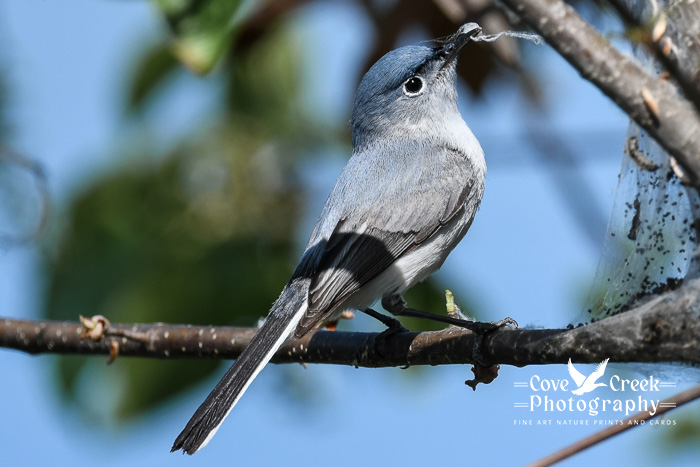
Blue-gray gnatcatchers (Polioptila caerulea) are a common bird species throughout most of the United States, yet capturing a good image of these birds often poses a challenge for nature photographers. However, as with many songbirds, photography success can be achieved with patience, anticipating bird behavior, and being in the right place at the right time (otherwise known as luck).
Blue-gray gnatcatchers are about four inches long, with the tail accounting for almost half of their length. Using a telephoto lens is very helpful for birds of this size, but even a 500mm lens requires maneuvering to a relatively short distance from the bird. The other option is to stay still, wait, and hope the bird eventually moves within an acceptable shooting range. The latter is my preferred approach. Admittedly, I have to remind myself to trust the process as the waiting drags on.
It's important to remember that a blue-gray gnatcatcher moving within a desired shooting distance is a fleeting moment. These birds are in perpetual motion as they fly and hop from one branch to another while foraging for insects and spiders. Of course, the branch to branch movement is also in and out of leaves, which lends an added degree of difficulty to capturing a good image.
Over the course of the last few years, I have found that the best time to photograph blue-gray gnatcatchers is when they are concentrating on nest building. During this time, they move a bit slower while gathering nesting material, and their focus is more on the task at hand and less on surrounding distractions (like shutter noise). They also tend to return to the same spot where there is plenty of nesting material, so you have time intervals to adjust camera settings, if needed.
Once I find an area with blue-gray gnatcatcher activity, I always look for eastern tent caterpillar (Malacosoma americanum) nests. The nests of these endemic pests provide a wealth of nesting material for blue-gray gnatcatchers. The bird will return repeatedly to the caterpillar tent, and pulling threads of webbing tends to hold them in place long enough to shoot several frames. This exact situation allowed me to capture the image for this blog.
I hope these observations and photography tips are helpful for photographing blue-gray gnatcatchers, and they can be applied to some other bird species, as well!
